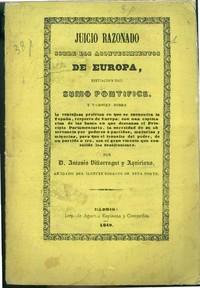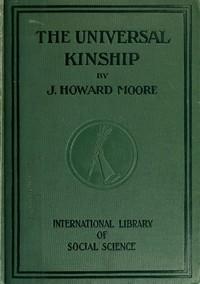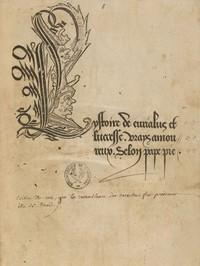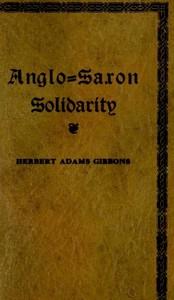Read this ebook for free! No credit card needed, absolutely nothing to pay.
Words: 85039 in 10 pages
This is an ebook sharing website. You can read the uploaded ebooks for free here. No credit cards needed, nothing to pay. If you want to own a digital copy of the ebook, or want to read offline with your favorite ebook-reader, then you can choose to buy and download the ebook.
THE PHYSICAL KINSHIP
THE PSYCHICAL KINSHIP
THE ETHICAL KINSHIP
THE PHYSICAL KINSHIP
'Like the Roman emperors, who, intoxicated by their power, at length regarded themselves as demigods, so the ruler of the earth believes that the animals subjected to his will have nothing in common with his own nature. Man is not content to be the king of animals. He insists on having it that an impassable gulf separates him from his subjects. The affinity of the ape disturbs and humbles him. And, turning his back upon the earth, he flies, with his threatened majesty, into the cloudy sphere of a special "human kingdom." But Anatomy, like those slaves who followed the conqueror's car crying, "Thou art a man," disturbs him in his self-admiration, and reminds him of those plain and tangible realities which unite him with the animal world.'
-- Broca.
THE UNIVERSAL KINSHIP
The PHYSICAL KINSHIP
Man's body is composed fundamentally of the same materials as the bodies of all other animals. The bodies of all animals are composed of clay. They are formed of the same elements as those that murmur in the waters, gallop in the winds, and constitute the substance of the insensate rocks and soils. More than two-thirds of the weight of the human body is made up of oxygen alone, a gas which forms one-fifth of the weight of the air, more than eight-ninths of that of the sea, and forty-seven per cent, of the superficial solids of the earth.
Man's body is composed of cells. So are the bodies of all other animals. And the cells in the body of a human being are not essentially different in composition or structure from the cells in the body of the sponge. All cells are composed primarily of protoplasm, a compound of carbon, hydrogen, nitrogen, and oxygen. Like all other animals, man is incapable of producing a particle of the essential substance of which his body is made. No animal can produce protoplasm. This is a power of the plant, and the plant only. All that any animal can do is to burn the compounds formed in the sun-lit laboratories of the vegetable world. The human skeleton, like the skeletons of nearly all other animals, is composed chiefly of lime--lime being, in the sea, where life spent so many of its earlier centuries, the most available material for parts whose purpose it is to furnish shape and durability to the organism. Man grows from an egg. So do all creatures of clay. Every animal commences at the same place--in a single, lowly, almost homogeneous cell. A dog, a frog, a philosopher, and a worm cannot for a long time after their embryonic commencement be distinguished from each other. Like the oyster, the ox, the insect, and the fish, like all that live, move, and breathe, man is mortal. He increases in size and complexity through an allotted period of time; then, like all his kindred, wilts back into the indistinguishable flux from which he came. Man inhales oxygen and exhales carbon dioxide. So does every animal that breathes, whether it breathe by lungs, gills, skin, or ectosarc, and whether it breathe the sunless ooze of the sea floor or the ethereal blue of the sky. Animals inhale oxygen because they eat carbon and hydrogen. The energy of all animals is produced mainly by the union of oxygen with the elements of carbon and hydrogen in the tissues of animal bodies, the plentiful and ardent oxygen being the most available supporter of the combustion of these two elements.
Man is, then, an animal, more highly evolved than the most of his fellow-beings, but positively of the same clay, and of the same fundamental make-up, with the same eagerness to exceed and the same destiny, as his less pompous kindred who float and frolic and pass away in the seas and atmospheres, and creep over the land-patches of a common clod.
Man is, then, like the fishes, frogs, reptiles, birds, and quadrupeds, a vertebrate animal. Excepting in his infancy, when he is a quadruped going on all fours, he uses his posterior limbs only for locomotion, and his anterior for prehension and the like. His spinal axis is erect instead of horizontal, and his tail is atrophied. But he possesses all of the unmistakable qualities of the vertebrate type of structure--a two-chambered body cavity, a highly developed and dorsally located nerve trunk, vertebrate vitals, a closed circulatory system, a ventral heart, red blood, a head containing sense organs and brain, and a well-ordered internal skeleton, consisting of a vertebral column with skull and ribs and two pairs of limbs, the limbs consisting each of one long bone, two long bones, two transverse rows of irregular bones, and five branches at the end.
Free books android app tbrJar TBR JAR Read Free books online gutenberg
More posts by @FreeBooks

: Drug Smuggling and Taking in India and Burma by Anderson Roy K - Drug addiction India; Drug addiction Burma; Drug traffic India; Drug traffic Burma
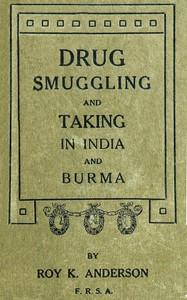

: Juicio razonado sobre los acontecimientos de Europa situacion del Sumo Pontífice y tambien sobre la ventajosa posicion en que se encuentra la España respecto del resto de Europa by Villarragut Y Aquiriano Antonio - Pius IX Pope 1792-1878; Spain Politics
